Missing Letters Worksheets for Ages 3-7
6 filtered results
-
From - To
Welcome to our engaging "Missing Letters Worksheets" designed for children ages 3-7! These fun and interactive worksheets help young learners develop their alphabet recognition skills and improve their spelling abilities. Each worksheet features a series of colorful images alongside missing letters, encouraging kids to fill in the blanks and enhance their understanding of letter sounds. Tailored to support early literacy, these worksheets are perfect for parents and educators looking to make learning enjoyable. Explore our collection today and watch your child's confidence and knowledge in the alphabet grow as they uncover the missing letters with enthusiasm!
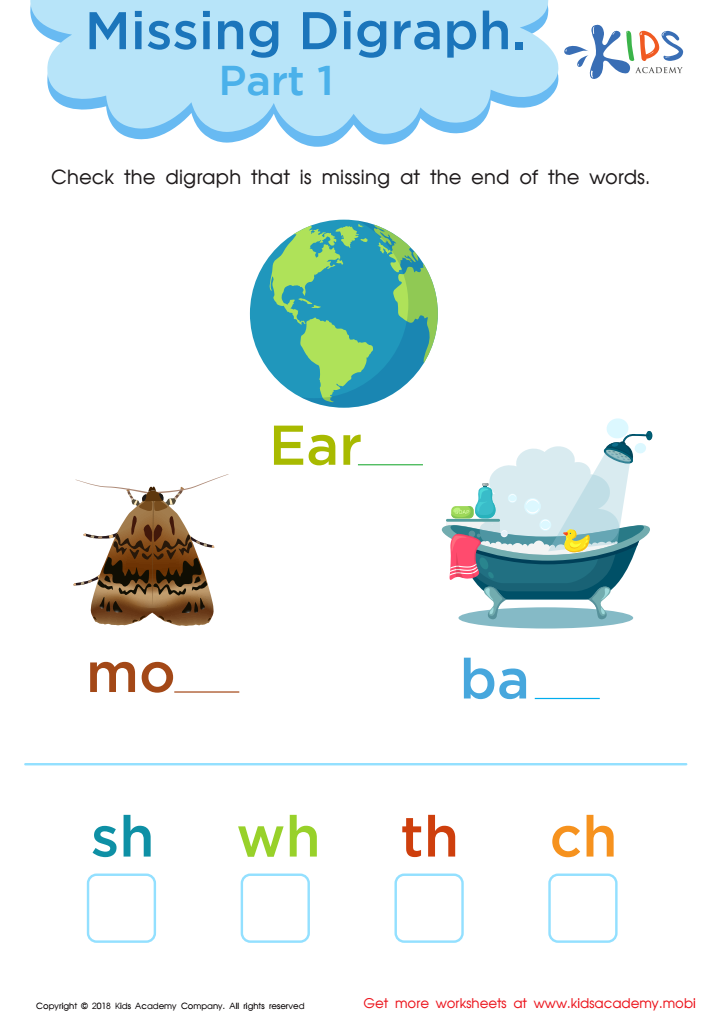

Missing Digraph: Part 1 Worksheet
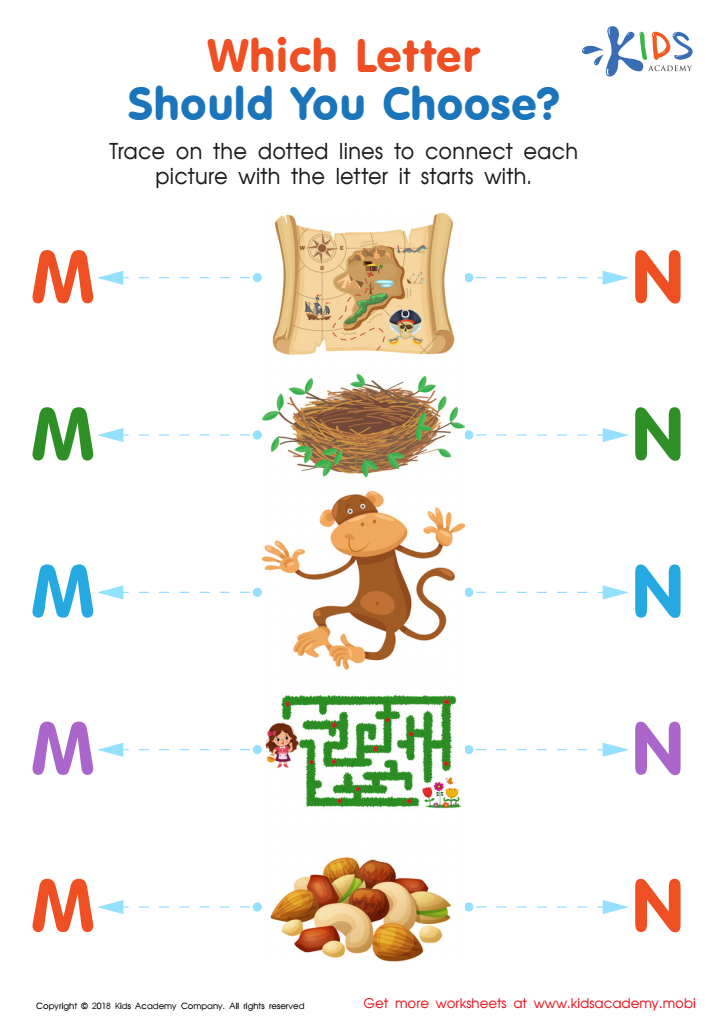

Which Letter Should you Choose? Worksheet
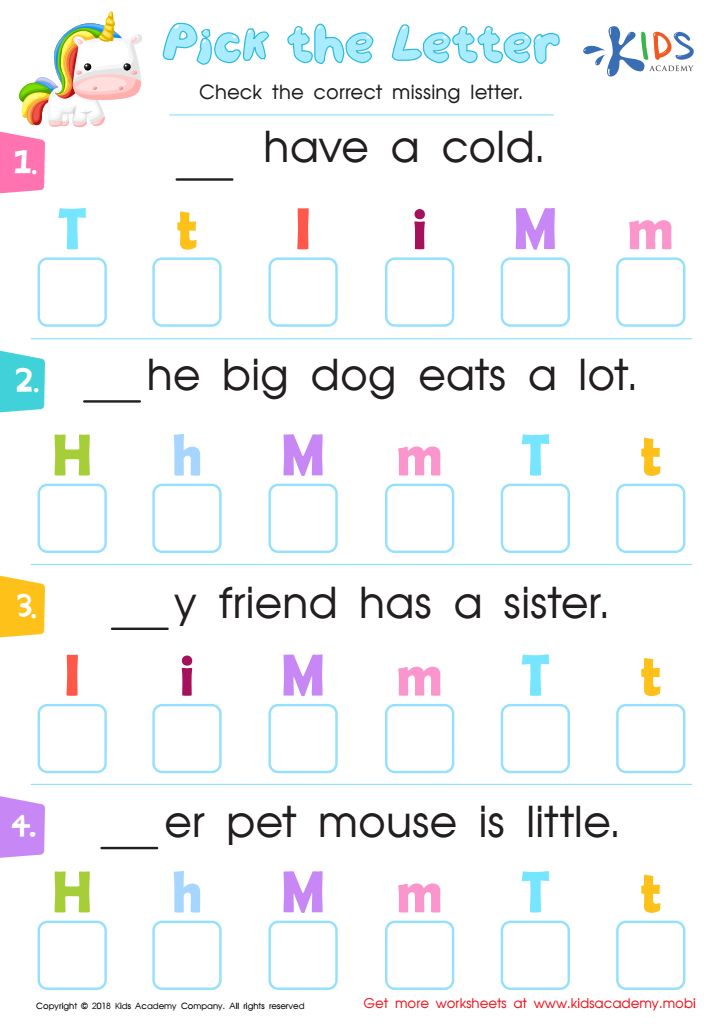

Pick the Letter Worksheet


Missing Digraph: Part 2 Worksheet
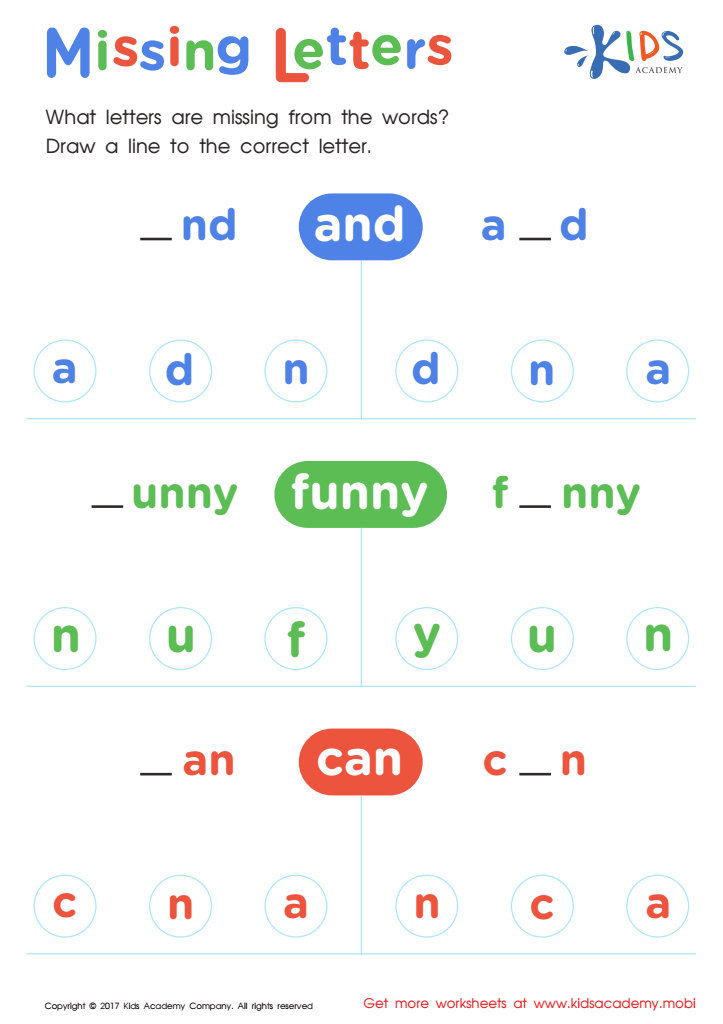

Missing Letters Worksheet
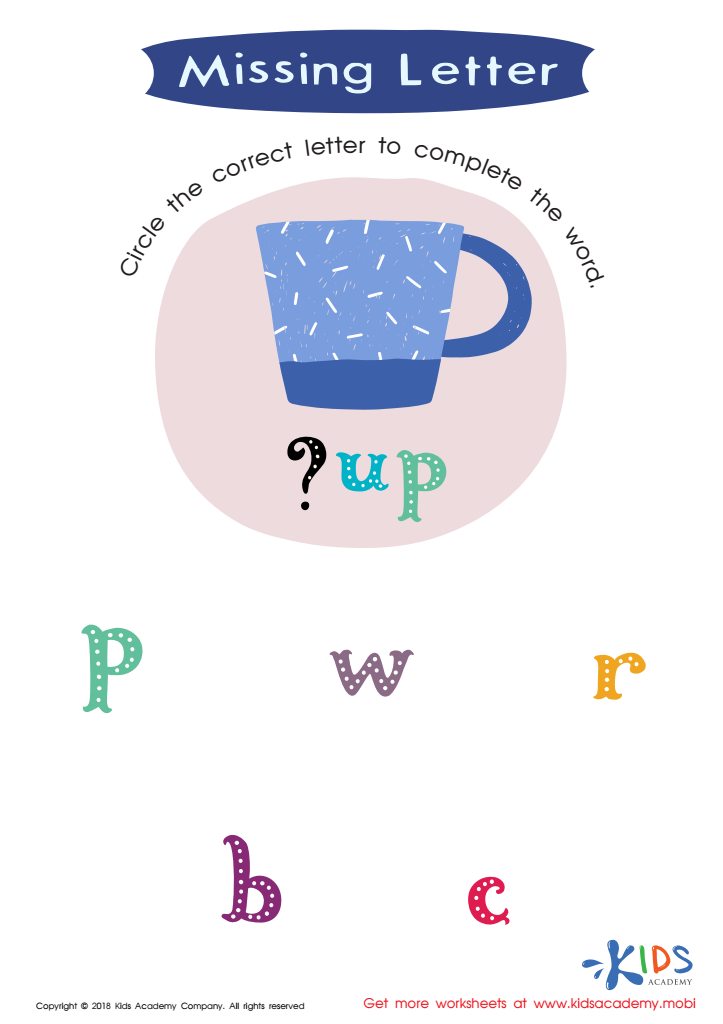

Missing Letter Worksheet
"Missing Letters" is an essential early literacy activity for children aged 3-7 as it lays the foundation for reading and writing skills. During this critical developmental stage, children are naturally curious and eager to learn. Engaging them in activities that focus on recognizing and completing letters enhances their phonemic awareness, which is vital for decoding words. Missing letter exercises foster cognitive skills, encouraging children to identify patterns and make connections between sounds and symbols.
Moreover, these activities promote fine motor skills as children practice writing letters, which is crucial for their overall development. Missing Letters also helps improve vocabulary, as children are often exposed to new words in context, broadening their understanding and language skills.
For parents and teachers, incorporating Missing Letters into daily routines transforms learning into an enjoyable experience, making it easier to motivate children to explore literacy. By participating in these activities, parents can create a positive association with learning, while teachers can assess their students’ understanding levels. Ultimately, Missing Letters engenders a lifelong love for reading and writing, setting a strong educational groundwork that shapes children’s futures.
 Assign to My Students
Assign to My Students









